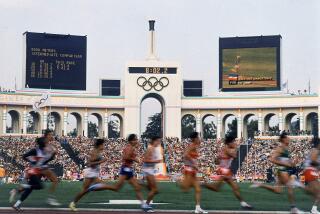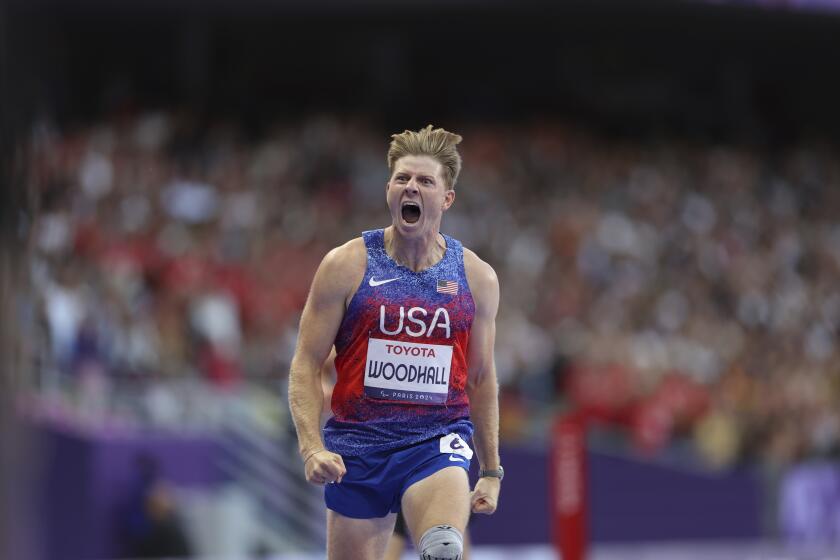At Age 30, Larrabee Got on the Fast Track
When Mike Larrabee made a run at the 1964 Olympic Games in Tokyo, his decision was met with little encouragement--and for good reason.
Larrabee was a 30-year-old teacher at Monroe High in what was then Sepulveda--now North Hills. A 400-meter specialist, he had taught at Grant High in Van Nuys from 1960 to 1963, but he transferred to Monroe to have a free sixth period, during which he could train.
Grant Principal Henry Dyck had told Larrabee that he “needed to face reality” when it came to making the Olympic team at his age, which was considered ancient for a sprinter.
But Larrabee proved Dyck wrong when he tied the world record of 44.9 in the 400 at the Olympic trials and proceeded to win the gold medal in 45.1 five weeks later in Tokyo, becoming the oldest man to win the 400 in Olympic history. He won a second gold medal at the 1964 Games, running a leg on the U.S. 1,600 relay team.
The win, which capped a No. 1-ranked season for Larrabee, was the pinnacle of an athletic career that lasted until 1968.
Although the Ventura High and USC graduate enjoyed teaching in the San Fernando Valley, he later moved with his wife, Margaret, and their three children to Santa Maria in 1968 to take over his mother’s beer distributorship with his brother Terry.
“[The beer distributorship] was a family business, and my mother was ready to retire and my brother wasn’t mature enough to handle it at the time,” he said. “My heart was in teaching, but then you start to get used to having the extra money around from the new job and it’s hard to go back.”
After retiring from track, Larrabee began devoting more time to mountain hiking, tackling such peaks as Mt. Aconcagua in Argentina, the highest peak in the Americas at 23,035 feet.
Always looking to get the maximum enjoyment out of any endeavor, the free-spirited Larrabee started raising llamas in 1985 to use as pack animals, but he began to sell them a few years ago when the herd he was raising in Santa Maria and on a 140-acre ranch in northern Idaho totaled 71 animals.
“I started out using them for hiking,” he said, “but then things started to get a little out of control.”
More to Read
Go beyond the scoreboard
Get the latest on L.A.'s teams in the daily Sports Report newsletter.
You may occasionally receive promotional content from the Los Angeles Times.







